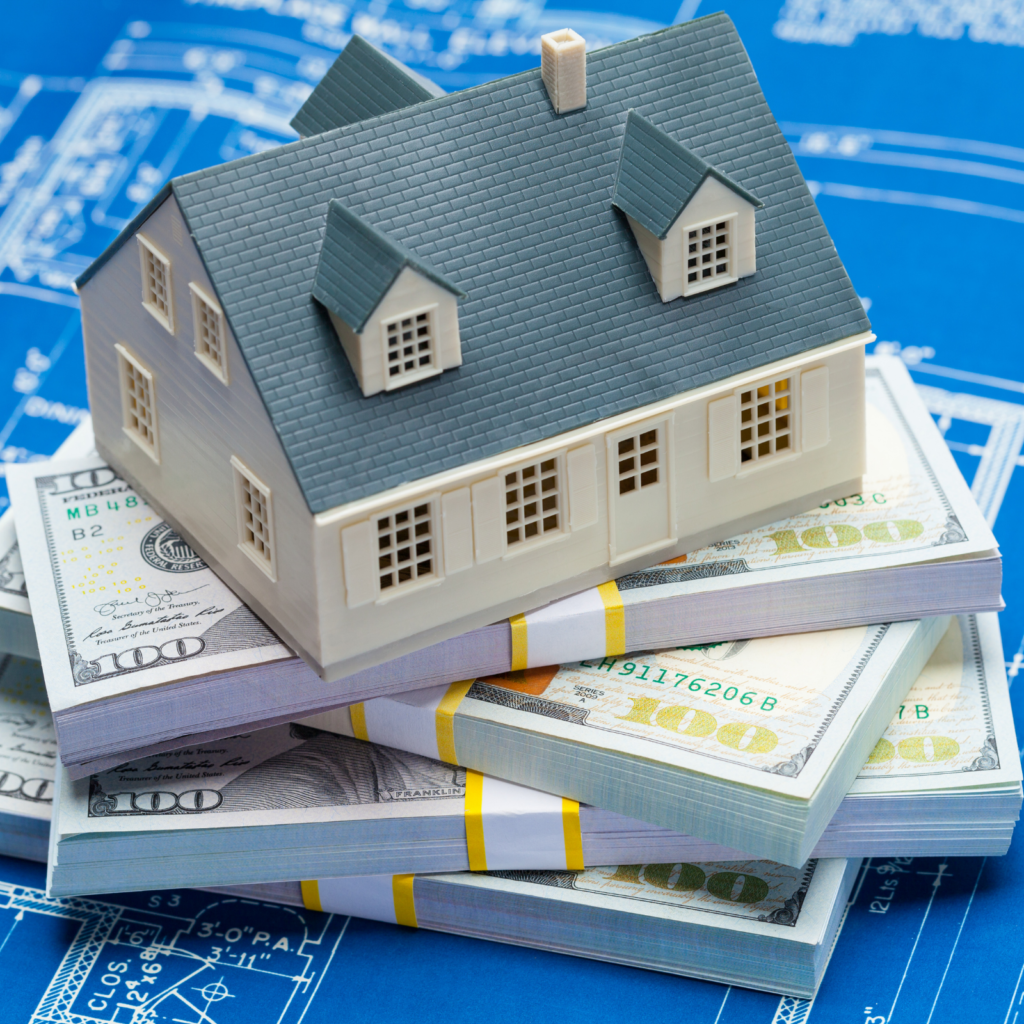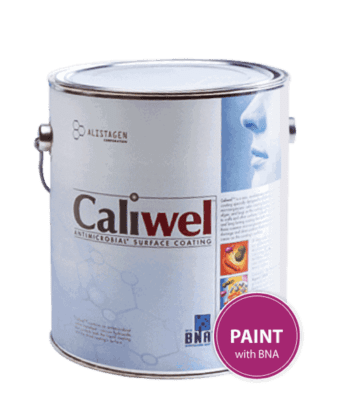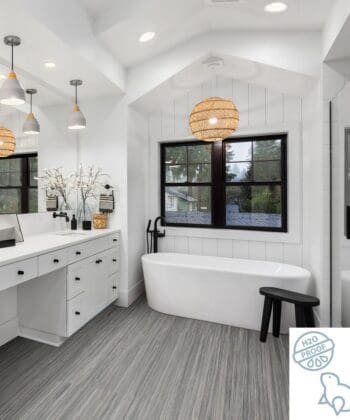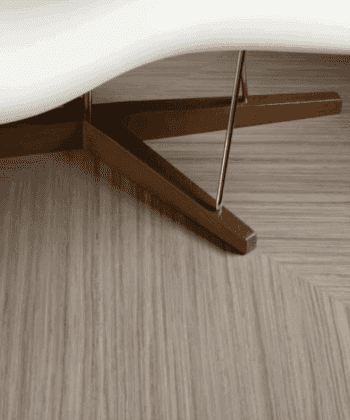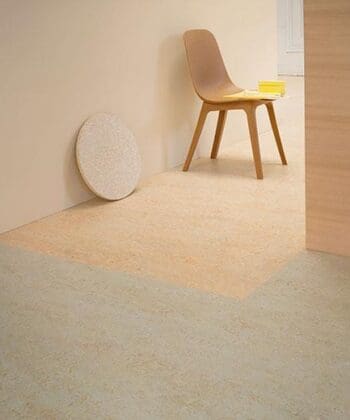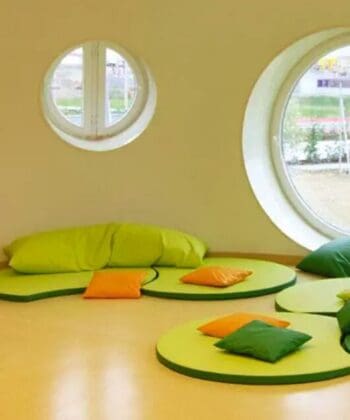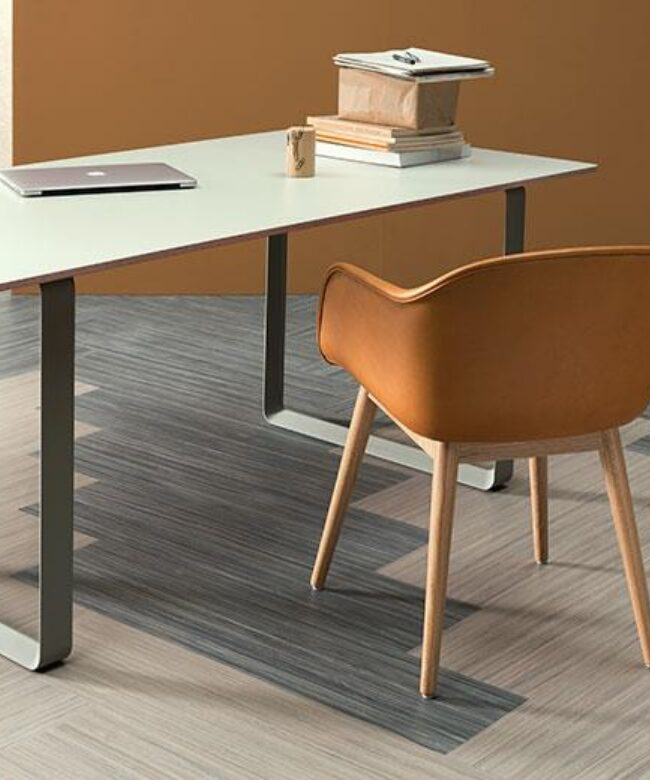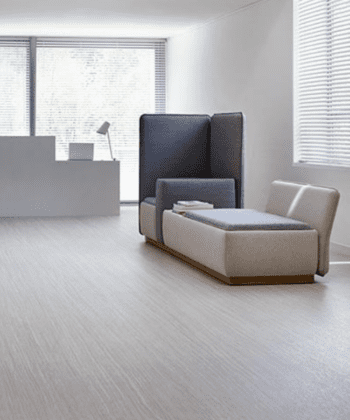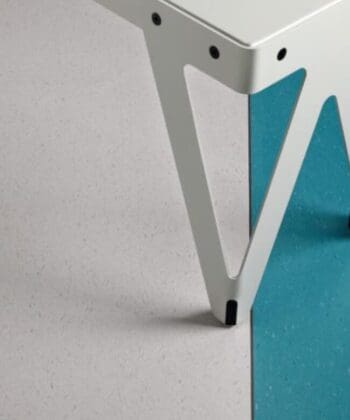Podcast
NTE Podcast: The Cost of Healthy Building Pt2
NTE Podcast: The Cost of Healthy Building Pt2
In the second part of this topic, Jay and I discuss the costs of the interior furnishings and finishes and how they can add up quickly. Once again, we prove that building healthy does NOT increase the cost of your home. Building with high quality, long-lasting materials does. We discuss drywall, flooring, cabinetry and more.
iTunes
Spotify
Transcript
The Cost of Healthy Building
Part 2
Andy: In part one of the cost of healthy building. Last week Jay and I discussed the bigger ticket items of the home, the framing systems, HVAC, roofing windows. This week we’re going to talk about flooring materials and cabinetry wall finishes, the areas of the home that really are important to the health of the occupants. And these numbers can add up quickly. So join us this week on Non Toxic Environments
And here we are: part two of our series on building healthy homes, the cost of building healthy homes. You know, Jay, we’ve gotten some great feedback already in part one and so I’m hoping that part two sort of ties it all in together and gives us a really good idea of explaining the cost of these homes.
Jay: Did anyone throw a question at you from part one you’d like to dig in on right now? Something that you went whoa, that’s something we should bring up right to the right at the beginning of the conversation?
Andy: Well, quite honestly, yes. It’s amazing you asked that. You asked that and folks, again not scripted this question. I got an email right away from somebody and said, I understand you’re talking about big ticket items… and, exterior mainly. I know you’ll probably cover this, but what about drywall? Now drywall is always, always a big part of conversation when it comes to healthy home builds. And it always comes down to, should we use regular drywall that’s gypsum board with paper on it. Should we use paperless drywall and paperless drywall is simply a gypsum board with a fiberglass mesh embedded into it and no paper… or should we use MGO board or magnesium oxide board?
There are many people in our industry that are huge, huge proponents of the MGO board, mainly because of its the attribute that it is completely unaffected by moisture. It’s completely inert and there’s so many benefits of it, but the downside always is the cost. And it’s not just cost of the material, Jay, it’s the cost of handling it, shipping it, having to work with it, finishing it, and then trying to make it look good at the end. And one of those big ticket items on the inside of the home can be very costly. It is the drywall.
Jay: There’s a lot of it. There’s a lot of it everywhere. I think part of the trepidation on people’s, young people’s minds, is the debacle with all of this Chinese sheet rock that got into the country some years ago. So that was a big news item and everyone was like, Oh my God, how will we know- where is it? Did we buy? Are we looking at it right now? And not even realize it.
Andy: The funny thing is, and I heard and I talked about this with a friend of mine in the industry, George Swanson and a number of you people, I’m sure you know George, he is one of the pioneers in the industry is specifically on the use of MGO board. And he explained this to me at length one day about how the the story of the Chinese wallboard; it really was not made in China. Folks it was actually made in Germany.
Jay: Oh yeah. I didn’t know that. I didn’t know that.
Andy: Yeah. So it’s this big misnomer about it. It’s there was some Chinese made drywall that was found on a job, but it was not the material that was actually causing the problems that was happening with this German made product that was actually eating away at the installation of the wires and it was causing fires and so forth.
Jay: Oh wow.
Andy: Because of sulfuric acid. Anyway, boring story folks are even, but… full circle. And so, he filled me in, but he’s also somebody who’s really been pushing the use of mag board and I totally understand it and I like the concept, the idea of it. But what it always comes down to is the cost of it. And I know I’ll hear from him after this episode comes out. I appreciate that because he is passionate about it and he is unbelievably knowledgeable.
But when it comes to the cost of building healthy, this is one of those areas where it’s just very, very difficult to work it into a project.
Jay: Right. So just for sake of the conversation here, we kind of threw note where we’re talking numbers last time and pray about how to figure out costs for thing going by square footage. So just a real quick reference. So a regular gypsum board, sheet rock down at Home Depot compared to MGO. What we talking about price wise?
Andy: Well, let’s say a sheet of four foot by eight foot, half inch drywall, which is what’s typically used, and that’s very common. And if I can do the math in my head here, you’re looking at about a quarter a square foot for the material.
Jay: All right? And then MGO, what’s the difference there?
Andy: MGO board is probably be twice that. Now in quantity, yeah, you can get it down to maybe it’s only 30% more. Now the beauty of MGO board is all the other attributes that you can’t put a dollar figure on. Now here’s the downside is you have to skim coat it with plaster in order to get it to finish out like paper, drywall. And now your costs start to go up. The same thing with if you are using a paperless dry while you’ve had a skim coat to make it look good. If you want that look that you’re used to seeing with regular drywall. So these are the considerations and you can certainly build a home healthy using standard drywall. If you are using drywall mud does not have antimicrobials and it says no formaldehyde donors, if you’re using primers and paints like the Safecoat products that are free of any HAPs and VLCs, if you’re using Caliwel– this is something we talk about quite often on the show, Caliwel is a coating that goes behind the drywall behind the insulation, right onto the sheathing and the studs on the exterior walls that will kill off mold spores and keep them from reoccurring for up to six years or longer. Fabulous, fabulous product.
Jay: I think that is such an incredible insurance policy when you’re building a wall system to be able to use a product like Calwell to give you that, not a guarantee, but I can, is going to the guarantee is you’ve got some protection behind the wall.
Andy: It’s inexpensive insurance so that it doesn’t occur.
Jay: There you go.
Andy: And we’re finding that the use of that product has made a world of difference on projects across the country. Let’s expand a little bit beyond the drywall. Let’s go to the paint. When we’re talking about healthy homes obviously we think about the four main things inside of a home that could be detrimental to indoor air quality walls and walls, floors, furnishings and finishes. And then, your cabinetry cabinets. Walls or painted walls and ceilings make up 75% of all the surfaces that are exposed in the home. That’s an enormous, enormous amount of area that could be potentially off gassing.
Jay: My analogy I use on that is the of the using the body human body as an example. So our skin is our biggest organ.
Andy: There you go.
Jay: So I think of the surfaces 75% of the interiors a skin. My idea is we want to try to take care of that skin as best we can. This brings up the idea of the different coatings that you can use to protect yourself.
Andy: And I certainly don’t want to make this a sales pitch for a Safecoat. So I won’t. Everybody knows my opinion on this. But I will say this provided that you use a paint material that is free of chemical off gassing, um, and is HAP free, and this is what we’re looking for. Traditional paints and coatings that do release VOC, SVOCs, other chemicals that are not actually regulated as such. This off gassing can actually continue anywhere from three and a half to four and a half years after it reaches a full cure. So this is why it’s so important to use the right products at the start, right?
Jay: It’s best to start with the source being the cleanest you possibly can.
Andy: There’s some rules of thumb here, folks. And one is if you have the ability to either remove the source or of the pollutant or just don’t use it at all, that’s the best way to go, right? Don’t use any toxic paints. Don’t use any toxic insulation. All right? If that isn’t going to work because of time, money, accessibility, whatever it is, then the next best thing is to seal it up and try to deal with it. That’s the subject of other shows. All right. So, let’s finish up on that wall. And one of the costs of healthy building would be the insulation that goes behind it.
And like we said in last week’s show, folks, this is not supposed to be the quintessential way to build a healthy home. We’re just talking about why healthy homes have a tendency to have the appearance to be more expensive and where. Why in most situations they aren’t if you compare apples to apples.
So with insulation, almost all fiberglass insulation made today is formaldehyde free. The very best insulation that I can find for projects, just about every project I work on is a formaldehyde free insulation. So the costs shouldn’t be any more in that realm.
Jay: And the access should be easy as well.
Andy: Easy. So now your entire exterior shell of the home is made with materials that should be readily available to your builders, so you shouldn’t have an extra expense. So what else we got Jay?
Jay: Well, we’ve talked about walls and ceilings. You talked about floors, we talked a lot about floors, but there’s a whole bunch of choices there. In the flooring world.
Andy: There are.
Jay: So, the hierarchy for us when we were talking about healthy indoor air quality is, we like tile.
Andy: Yes.
Jay: As a choice. We like hardwood as a choice.
Andy: Yes.
Jay: I’m not opposed and it’s become popular- concrete is a choice becoming very popular. Now we have, there’s cork and bamboo, right? There’s the Marmoleum from Forbo to name another company. So those are the flooring choices. And of course they are kind of in order of price as well. So your tile can be a little more expensive than your wood floors. Or wood floors can be more expensive than some of those other materials.
Andy: But here’s the big picture of what you just said. What we’re advocating for are hard surfaces that are easy to clean.
Jay: Correct.
Andy: Specifically the ones that don’t off gas. There are a lot of great brands out there. Let’s not talk brands right now.
Jay: Let’s just talk. There’s plenty. Yeah.
Andy: So let’s just talk materials. Nothing you talked about would be any more expensive than what are typically used on homes today, right? So yes, you can get a hardwood floor that’s $5 a square foot for material. You can get a hardwood floor that’s $45 a square foot for material. So just the fact that it’s a healthy product does not explain why a home would cost more if you choose the exotic species of hardwood for your house and your house is way over budget. That’s why- it’s because you chose an inexpensive product.
So just the mere fact that you are using wood does not mean it’s going to be more expensive. Again, trying to explain why there’s a difference in price. At the end of this show we’ll kind of boil it all down and give you the synopsis of why healthy homes are typically more expensive. When it comes to the flooring materials, there are a lot of great choices out there. So let’s just say we use on the average and this is what he uses all my clients, anywhere from 8 to $10 per square foot installed is what we normally budget in a home project for hardwood, tile, bamboo, cork, linoleum, just everything is in about in that 8 to $10 a square foot furnished install. And I know it’s different from area to area folks, but this is just to give you an idea.
Jay: It’s a good reference point, absolutely correct.
Andy: And I can find incredibly toxic flooring materials for that same price or I can find nontoxic materials for that price. The toxicity does not dictate the pricing. Notice one thing we didn’t talk about here was carpet. And yes, there are some healthy carpets on the market. We’ve talked about this in past episodes, but generally speaking, the carpets that are available to the builders and in most flooring stores are going to be made with a lot of ingredients that are very, very, dangerous to live with. And so we just avoid that conversation completely.
Jay: Yes, yes. Okay. So floors, walls, ceilings, a big, big topic. A big, an expensive can be an expensive topic is cabinets.
Andy: Cabinets. You know, Jay, this is the one part of the episode that I sort of dread to talk about. The reason for this is that’s is a tough one. I have to tell a lot of clients that sometimes you got to take a step backwards to take two steps forwards. Cabinetry is tough. I have tested cabinets and homes that are old, and new homes too, in these cabinets can off gas a toxic level of formaldehyde. I know this is the part of a home that can really, really be harmful to the occupants. The problem is, if you do want cabinets that are made to be healthy for the occupant, you have to find a local cabinet maker who’s willing to use healthier finishes. Because that’s really what it comes down to, right?
Jay: That’s exactly right.
Andy: Any cabinet maker can use formaldehyde, free plywood. It’s available. It’s all over the place, but not all of them. Matter of fact, very few of them will use water-based solvent, free finishes. They all want to use what they’re used to because woodworkers have a very, very strong opinion of how things should look correct. And it’s been really the most difficult part of my business.
Jay: All right. And they’re comfortable with their method methodology, right? They know how a solvent is going to cure. It’s going to cure fast. There’s a volatile nature of it. So they have a shorter working time and that helps them get their jobs done quicker so they can do more jobs. I think mostly though, it’s just the fact that they’re entrenched in their methodology. This is what they’ve always done. This is what they were taught by whoever taught them, right. They know their teachers using the same kind of product lines. And it just goes on and on and on and on. To have them switch over, if you can find them, folks, it’s their gold. Because that’s one of the limitations. The other thing that’s been real popular now is these companies like Ikea. You get calls, I get calls. People- they went to Ikea and they bought something and they’re having an installed and they’re worried about something coming off the Ikea. Right? So, and there’s other companies that will do home Depot will do it. You can go to home Depot and they’ll sit down with their designer and they’ll design your whole kitchen with all the cabinets and everything in there. So, because of the cost of something custom, they’ll go to someplace like an Ikea or a company that sells a program and then they’ve got them in their home and then they’ve got issues. Right. Oh my God. You know, uh, it’s off gassing we can’t be in there and we, they’re brand new. What do we do right then? Then we’re in a treatment process.
Andy: Yeah. Well, and we were fortunate enough to have a local cabinet maker who used our finishes and did a number of projects and just did a fantastic job. And unfortunately, he retired from the business. The fact of the matter is that he proved that you don’t have to be… he was an amazing cabinet maker. He was an award winning a cabinet maker. But he wasn’t anything special in the standpoint of he was skilled in the art of applying water base. He was good at it because he practiced it and he got good at it. And he did a great job and customers loved his work. Most cabinet makers that I work with across the country, when they are forced to use a water based solvent, free coating, they fight it tooth and nail because they don’t have the time to learn. They don’t have the ability because if they’re trying to learn something new, that means they’re not actually earning a paycheck.
I understand why they resist. On the other hand, you really hope at some point they finally say, listen, for the health of myself and my workers and my customers, I just finally need to make the switch. And when you make the switch, you’ll find that the solvent free finishes work wonderfully and they look great. You may have to change your expectations a little bit and what the finishes end up looking like because water-based and solvent-based just look different.
Jay: They do.
Andy: But that said customers love the look of it. And so I guess this is the one point of our conversation that I can say that sometimes healthier cabinets do cost more than unhealthy cabinets because there’s just not a lot of people out there who are doing it. That may change, as you say with Ikea and there’s other like these knocked down cabinet companies, they shipped them, knocked down, you put them together in the field and they’re starting to use UV cured finishes and those UV cured finishes are actually free of off gassing. And so as a fine and as we move forward with that material folks, we’ll definitely have another podcast just on that. I think this is the wave of the future. As you know, Jay is talking about these, these modular type cabinets. So in any event, so you know what else inside of the home you’ve got.
Jay: So there’s not necessarily a huge spaces, but important is countertops. Countertops.
Andy: Yes. Yes, so when talking about countertops, I know the trend is to use granite and marble and these beautiful stones. I always tell my customers, if you want a healthy home, you cannot use natural stone countertops. Why is that? Well, because natural stone has to be sealed on a, on a regular basis. We’re talking every six months. You have to use sealers and those sealers are not very safe. There isn’t a toxin free sealer made for countertops. Countertops are the most abused surface in the house between the water and the soap and the cutting and the acids that come off of tomato juice and lime juice and all these oils absolutely abused.
Jay: I tell people the most hostile surface in your home is your kitchen counter top.
Andy: For sure. For sure. And so what we have been telling people is a quartz. Quartz is 93% natural stone, 7% polyester. A type of poly resin never requires sealing. I don’t want to say indestructible, but they sure do take a beating, easy to clean up with soap and water, about the same price as granite when granite first became popular about 10 years ago. What’s happened now in the industry is that you had countertops, like laminate tops that were all used to the Formica countertops and let’s say those Formica countertops for about 20 bucks a square foot installed, to give you some numbers. Corian, which is what’s called solid surfacing, it’s a plastic material. Everybody knows the Corian product that or other materials out there like it now. That comes in and around the 50 to $60 a square foot installed range. Granite used to be in the 80 to $100 a square foot range. That has dropped significantly in the last few years, probably to, to about the same price as Corian. And that’s because so much of this material is coming from overseas and they’re bringing in in bulk and it’s not all of it is of high quality. It’s sort of substandard. It’s being used so much now that the price of it just came down tremendously. Quartz is now at about the 80 to a $100 a square foot range. But it’s one of those situations where you would definitely get what you pay for.
Jay: Yes. Well if you take out the idea that you have to constantly reseal it, I think you can start to see it make some financial sense when you realize that, yeah, we’re going to spend this upfront but we don’t have to deal with the other things down the line. So we can take that out of the future budget. Which means we can use it now. Kind of a strange way to think about it, but if you look ahead and go, well, if we are going to have to spend $200-300 every time to put a new sealer on there, let’s see, let’s do the math on that. So a couple of years we got to do it against three in another couple of years in a 300. I mean, we’re starting to add up all this maintenance stuff and you say, wait a minute, let’s just eliminate that from the equation. Let’s put all that money that we going to spend in the future and it’s going to cost us more in the future anyway. Let’s just put that money into it now and do it right here and save ourselves a grief and aggravation of all of that.
Andy: Without a doubt. And then, coupled that with the fact that the sealers are not healthy, right? So now you’re subjecting yourself to all that solvent, right? And the time it takes to do it, and the disruption in normal life…
Jay: And is it food safe?
Andy: Right, right. Yeah. And so imagine clean off all your countertops with all of your appliances every six months to seal your darn countertops.
Jay: I don’t want to do that. No.
Andy: And so, it starts to justify the cost of it. Now there are other things that pop up. Caulking materials, sealants, heating fixtures.
Jay: All your knobs, your plumbing fixtures that are fancy, ones that are coming out of the wall and all that. Lighting.
Andy: Lighting: there isn’t really anything when it comes to lighting there, there aren’t any lighting materials that I would say are healthier than others. So that’s one of one area where we just don’t really have a lot to choose from. On the other hand, it comes down to the bulbs you use and how you use them.
Jay: I guess if someone was really persnickety about lighting, if they wanted to have full spectrum lighting, you can get it, but it’s not the norm. But for those of you folks out there to really think you want to have a more of a natural sunlight type experience indoors, right? There’s full spectrum lights, but you’re right, Andy, it’s not a big deal as let’s say plumbing fixtures…
Andy: I will say this, when it comes to actual plumbing fixtures, I’m talking like, your faucets and your shower heads and things like that. I know everybody wants to go online and get a deal from one of these faucets direct.com or something like that. I don’t know who that is, one of these companies or go to, one of the big box stores and pick it up… the fact of the matter is that plumbing fixtures, this is another prime example of you get what you pay for.
The materials that are out there that are at a discount are discounted solely because they are not made as well as the higher priced units.
Jay: Correct.
Andy: So you might be able to get a kitchen faucet for $120, but I guarantee you we’ll be replacing it in five years. If not, you’re just biding time before you have to and now it’s the cost of hiring a plumber and the disruption of it. In some municipalities you got to pull a permit just to change a fixture like this. Spend $250 folks get the better one. Don’t buy from discount houses to get plumbing fixtures. Buy from reputable plumbing and bath supply stores. They are the ones who are selling the better versions of the products you’re finding online for a so-called deal, right?
Jay: Yeah. Good advice. Good advice. Again, the whole idea of looking at it in into the future a little bit and realizing that if you can, if you’re not going to make the wise decision now you’re going to wind up kicking yourself later or sure. Because for a couple of reasons, A) if you bought the good one today, I’m trying to buy that good one tomorrow. Guess what folks, it’s going to cost you more… going to cost you more, because things keep going up in price. So that makes sense to try to make those great smart decisions at the front end, not having to back in to it and pulling your wallet out and ringing it dry because you’re, you know, you’ve got to spend more money than you normally would have had to.
Andy: This is kind of the culmination now of these two episodes. Yes, you just hit it on the head, which is you try to do your best, you try to buy the best you can and when you’re building a healthy home, it’s not just the cost, the initial cost of the material, but you are also looking at the long term of- it’s more detrimental to the health of the occupant if you have to seal your countertops every six months. If you have to change your plumbing fixtures every five years, you have to repaint every five years. If you’ve got to reroof every 10 or 15 years, all of those things can be harmful to the indoor air quality and of the occupants. So if you are buying better quality materials because you want your house to last longer without having to maintain it, this is a more expensive home.
So when the industry starts to throw around this idea that healthy homes just cost a more, that may be factually correct, but it’s not costing more because it’s healthy. It’s costing more because it’s better quality and the industry does not want people to talk about this because it exposes the fact that the way we build homes here in the US is atrocious. We build homes out of sub-quality materials and just look at it, look at what happens when, somebody does use a drywall material that contains sulfur, Glue Lam beams that use a flameproof coating that happens to off gas to toxic levels of formaldehyde and exteriors sheathing that’s not moisture proof and therefore you’ve got mold buildup. I mean, there’s so many,
Jay: I’m hearing you and it’s making me sick. I know what you’re saying.
Andy: Building a good quality home that’s going to last a hundred plus cost more because those materials costs more to make. It just so happens to be healthy as well.
Jay: Probably the final thought I always have on this subject is how important is your health to your family, right? And to yourself and what does it cost? If you think about the cost of healthcare and boy it’s on everyone’s lips these days, isn’t it? When you think about the cost of healthcare and you think about what you can do to ensure that you have good health, this is just as much a part of what you eat and how you exercise and how you, all those things you would do to keep yourself healthy. This has to factor into that. What do they say? We are 80% indoors? Something like that.
Andy: 90%.
Jay: 90. There you go.
Andy: At least here in Wisconsin.
Jay: And we spend a little more time outside. I get a little more time outdoors. I do. But I guess the point folks is this is an important thing. You know, that if you’re going to have to go to a healthcare provider for something that you could have prevented, it’s going to cost you. So let’s just not do that. Let’s not go there.
Andy: So the now the questions we’ll get right after this episode comes out is, sure, okay this is great, but how am I going to afford to build a healthy home then because I can’t afford to build a custom home? I can’t afford to build a home at $250 a square foot. I can only build a home at $150 a square foot.
Jay: Okay, so what we do, so what we do is we make two lists, right? We got the list of what we would like and then we’ve got the comparable stuff on the other side, which maybe we don’t like so much. And then what we do we- it’s like those old puzzles where you drew a line across to match. Match column two with column one, right? So we look at column two and go, I want that this is the healthiest. I look across to its counterpart, where is that? Oh, it’s drywall, MGO or drywall. And then you can kind of reference back and forth and say, okay, well we would like that, but can we use that? Oh yes, we can use this. It’s going to be cheaper. We can use this because we have another plan for that. Down in our list here, a down bottom, it says oh, safer paint safer coatings. Okay, that can line, can go up to the drywall, we can connect safer coatings to drywall is cheaper and maybe we’re not so happy with. So that’s how I’m thinking about it. What do you, how are you thinking about that?
Andy: Well, this is really what I do with my consulting business and this is one time I will actually use this as an advertisement. I call it healthy value engineering. In the industry there’s a term called value engineering and that’s when the contractors try to cheap it up the cost of the building, but try to maintain the integrity of what the architect was looking for. I do it from a standpoint of of human health. And we look at all of the different numbers that it put together on the bid- 30 different categories of different prices that come into the, into the bid. And I can look at it and say, all right, well we might be able to save some here if maybe we do use instead of a metal roof, we use just regular dimensional shingles, asphalt, dimensional shingles, because ultimately that’s not gonna affect the health as much as something else… Would save $40,000 there. But then we can afford to do the MGO, right? Then we can afford to do better windows.
Jay: We can do those quartz countertops.
Andy: So what we do is we shift priorities, right? And so I call that healthy value engineering. And that’s something that I do with all of my clients. We’re building homes. We look at this and say, where is that money best spent to optimally affect positively the human health of the occupants?
Jay: Folks, we’re going this direction. It’s going to be mainstream. It’s not mainstream yet. But what Andy suggesting will hopefully in our lifetimes be be mainstream. Why? Because it just makes good sense.
Andy: It makes good sense. And I know you can’t build like this with spec home builders that are building 200-300 homes a year. Cannot do it this way. I understand that they have to work on economies of scale.
Jay: Correct.
Andy: Now, if that builder came to me and said, Andy, we need to price out paint, flooring, insulation, whatever you can provide for 300 homes, I guarantee you we can get to some pretty good numbers. Will it be as much as what they are user as low as what they’re using now? No. Well probably not because our quality level is higher. Right? But you know what, it’s going to be more affordable. But builders don’t do that. They want it, as you said it before, Jay, they want to use the products that they are used to because it makes life easier. There has to be this paradigm shift where builders don’t look at the price first, but they look at the impact first.
Jay: Right? I think, I think our listeners are part of that group growing group who are aware and want to push the envelope and change the paradigm and develop a new model. We’re all working together on this folks. Andy and I, and all of you listening to us who have this as a part of what you want to do. We have a lot of great people in our industry that are pushing this idea. We try to interview some of those during the course of the year in our podcast interviews, and we’re going to have some good ones coming up. So remember that, we’re all pulling in the same direction in this rowboat we’re in.
Andy: Well, here’s the other thing too, folks. It’s still a practice, and we’re still learning. We’re all still learning. There is no such thing as a perfectly healthy home. There isn’t. It’s impossible. And the phrase that I use and I’ll continue to use it is: you’re going to drive yourself to the poor house or to the nuthouse, one of the two or both trying to achieve perfect healthy home. It’s not possible. So we try to do is get you the best we can for what you can afford to do.
Jay: We’re gonna make the best compromises that are available.
Andy: You got it. So, alright, on that note folks, I know you’re going to have questions from this. I expect an email from George. He’s writing it right now. And at some point I would love to have him on the show to discuss these ideas.
Love that. That’d be great. He is just a wealth of information, and others who I work with, as you do too Jay every day. We’ll have those folks on as well. But if you do have questions about this, feel free to reach out, leave us a SpeakPipe, send us an email. If you like what you hear, give us a rating and review. We greatly appreciate that. We seriously love our listeners and we’re so happy that we’re getting some awesome feedback from you all. It’s really heartwarming.
Jay: I agree completely.
Andy: Jay, this has been a good two part series and I hope that people really understand it now why homes that are healthy are not necessarily more expensive because they’re healthy. It’s because they’re just really good quality. So folks, we’ll be back next week with another fantastic episode. We appreciate you listening and have a great week.
View Transcript PDF

